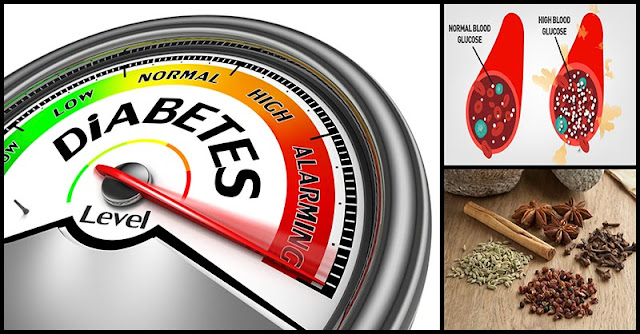When your body can’t effectively transport sugar from the blood into the cells, high blood sugar occurs. This can lead to diabetes when left unchecked.
It was reported by a study in 2012 that 12–14% of US adults had type 2 diabetes, while 37–38% were classified as pre-diabetic.
Here Are Some Of The Easy Ways To Lower Blood Sugar Levels Naturally
Exercise Regularly
With regular exercise, you can lose weight and increase insulin sensitivity,
Exercise helps your muscles use blood sugar for energy and muscle contraction while increased insulin sensitivity means your cells are better able to use the available sugar in your bloodstream.
You should routinely check your levels if you have problems with blood sugar control. In this way, you will learn how you respond to different activities and keep your blood sugar levels from getting either too high or too low.
Good forms of exercise include brisk walking, hiking, weight lifting, swimming, running, biking, dancing, and more.
Control Your Carb Intake
Your body breaks carbs down into sugars (mostly glucose), and then insulin moves the sugars into cells. This process fails and blood glucose level rise when you eat too many carbs or have problems with insulin function.
You must control your carb intake by counting carbs or using a food exchange system. This can help you plan your meals appropriately, which may further improve blood sugar control.
A low carb diet helps reduce blood sugar levels and prevent blood sugar spikes.
Implement Portion Control
You can regulate your calorie intake by implementing portion control, which in the long run can lead to weight loss.
Controlling your weight promotes healthy blood sugar levels and has been shown to reduce the risk of developing type 2 diabetes.
By monitoring you serving sizes, you can reduce your calorie intake and subsequent blood sugar spikes.
Here are some helpful tips for controlling portions:
- Use smaller plates.
- Eat slowly.
- Measure and weigh portions.
- Read food labels and check the serving sizes.
- Avoid all-you-can-eat restaurants
- Keep a food journal.
Drink Water And Stay Hydrated
Drinking more water may help you keep your blood sugar levels within healthy limits. Moreover, it can also help your kidneys flush out the excess blood sugar through urine.
An adequate amount of water intake can re-hydrate the blood, lower blood sugar levels and reduce diabetes risk.
Increase Your Fiber Intake
Fiber slows down carb digestion and sugar absorption. It promotes a more gradual rise in blood sugar levels.
There are two kinds of fiber: soluble and insoluble. Both are important, but soluble fiber has been shown to lower blood sugar levels.
A diet rich in high-fiber foods can help manage type 1 diabetes by improving blood sugar control and reducing blood sugar lows. This includes foods such as fruits, whole grains, legumes, and vegetables.
Choose Foods With A Low Glycemic Index
The glycemic index was developed to assess the body’s blood sugar response to foods that contain carbs. Eating low-glycemic-index foods has been shown to reduce long-term blood sugar levels in type 1 and type 2 diabetics.
Foods with a low glycemic index include oats, barley, legumes, corn, yams, sweet potatoes, seafood, meat, eggs, beans, lentils, most fruits, and non-starchy vegetables.
Get Enough Quality Sleep
Poor sleeping habits and a lack of rest affect blood sugar levels and insulin sensitivity. They can increase appetite and promote weight gain.
Depriving yourself of sleep decreases the release of growth hormones and increases cortisol levels. Both of these play an important role in blood sugar control.
It is best to get a sufficient amount of high-quality sleep every night.
Monitor Your Blood Sugar Levels
Try measuring your levels every day, and keeping track of the numbers in a log. By doing this, you can help control your blood sugar and find out how your body reacts to certain foods.
Control Stress Levels
When you are stress, hormones such as glucagon and cortisol are secreted. These hormones cause blood sugar levels to go up.
It has been found that relaxation, meditation, and exercise can significantly reduce stress and lowered blood sugar levels for students.
Apple Cider Vinegar
Apple cider vinegar promotes lower fasting blood sugar levels by decreasing its production by the liver or increasing its use by cells.
To incorporate apple cider vinegar into your diet, you can add it to salad dressings or mix 2 teaspoons in 8 ounces of water.
But if you are already taking medications that lower blood sugar, it’s important to check with your doctor before taking apple cider vinegar.
Eat Fenugreek Seeds
Being a great source of fiber, fenugreek seeds can help control blood sugar levels.
Studies have shown that fenugreek can effectively lower blood sugar in diabetics, and reduce fasting glucose and improve glucose tolerance.
It can easily be added to baked goods to help treat diabetes or you can make fenugreek flour or brew it into tea.
Fenugreek seeds are also considered one of the safest herbs for diabetes. The recommended dose of fenugreek seeds is 2–5 grams per day.
Experiment With Cinnamon Extract
Cinnamon can improve insulin sensitivity by decreasing insulin resistance at the cellular level. It can lower blood sugar levels by up to 29%, according to studies.
It slows the breakdown of carbs in the digestive tract, which moderates the rise in blood sugar after a meal.
An effective dose is 1–6 grams of cinnamon per day, or about 0.5–2 teaspoons.









